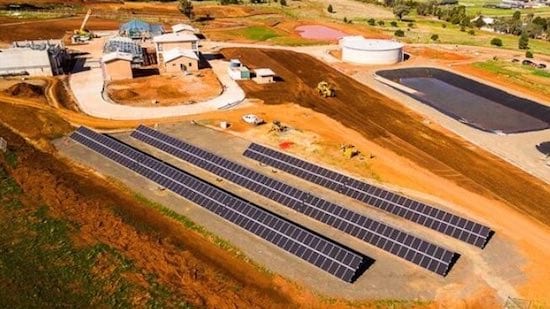The regional New South Wales shire of Parkes is exploring its options to create its own “virtual power network,” based on its existing PV investments and future solar and storage installations.
The plans were aired at a Parkes Shire Council meeting last month, starting with a $100,000 investigation into the feasibility and design of local government starting its own energy grid.
“It’s time to revisit our overall strategy,” Council’s Director of Works and Services Ben Howard told council’s February meeting, according to the Parkes Champion Post.
“We’ve had a pretty big investment (in solar) since 2011, starting with the building we’re sitting in at the moment and some of our smaller areas like our depot, the pool and of course more recently with our two large sewer and water infrastructure projects.
“What does the near to long term future hold for solar technology and storage technologies as part of that?” he said.
“Essentially we’re seeking for $100,000 to put a strategy into place.
“If we can produce a large amount of solar we can put in place a virtual network which is something relatively new to the industry.
“We can sell power generated at one of our sites to one of our other sites which may not have the ability or space to put solar on,” he said.
“So we essentially start our own energy grid as long as it is within the existing sub-station or larger regional energy network.”
Howard noted that the Parkes Council admin building, which had 100kw of PV on the roof was generating electricity on a weekend – power that could be used elsewhere.
Parkes, which is New South Wales’ largest electorate, has also been one of Australia’s biggest and earliest adopters of rooftop solar. It is also home to one of Australia’s pioneering big solar projects, the 102MW Nyngan Solar Plant, as well as a 66MW project that is currently being completed by French renewables developer Neoen.
At a local government level, as noted above, Council has installed 100kW at its Sewage Treatment Plant (STP) site and another 100kW at the Water Treatment Plant (WTP) site to offset the energy consumption of the two plants.
This article was originally published on RenewEconomy’s sister site, One Step Off The Grid, which focuses on customer experience with distributed generation. To sign up to One Step’s free weekly newsletter, please click here.








